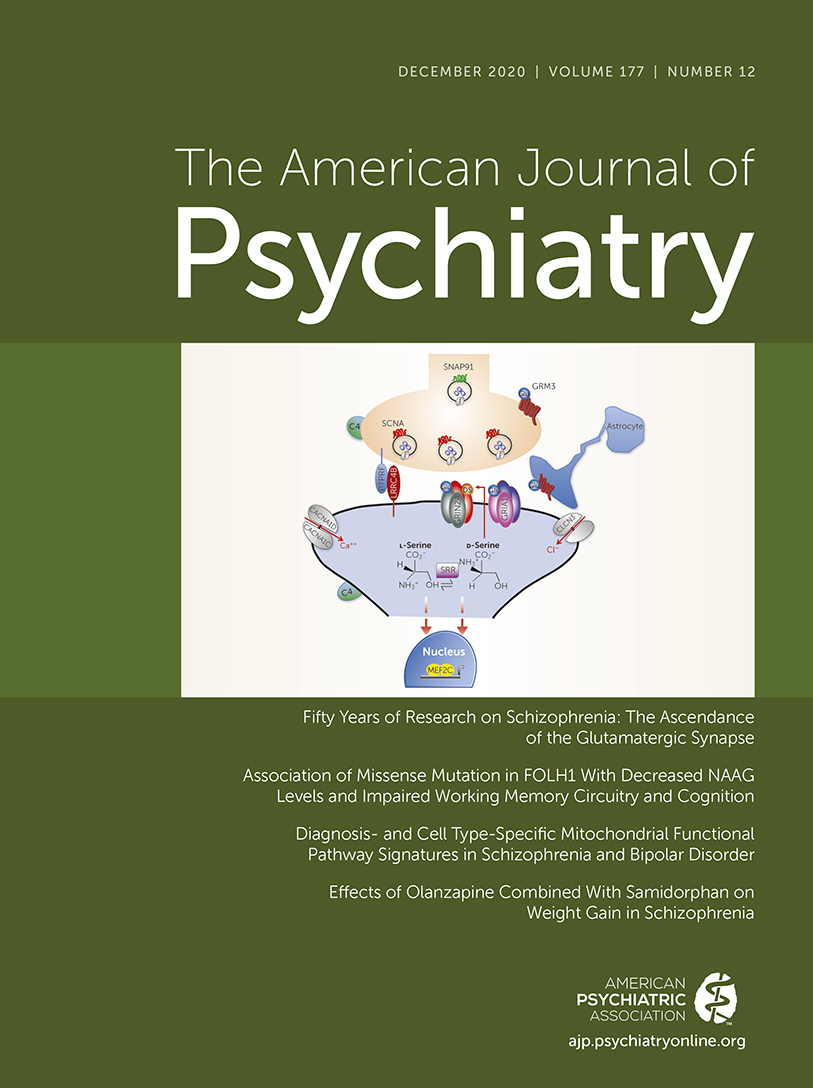Effects of Olanzapine Combined With Samidorphan on Weight Gain in Schizophrenia: A 24-Week Phase 3 Study
Abstract
Objective:
A combination of olanzapine and the opioid receptor antagonist samidorphan is under development for the treatment of schizophrenia and bipolar I disorder. The single-tablet combination treatment is intended to provide the efficacy of olanzapine while mitigating olanzapine-associated weight gain. In this phase 3 double-blind trial, the authors evaluated the weight profile of combined olanzapine/samidorphan compared with olanzapine in patients with schizophrenia.
Methods:
Adults (ages 18‒55 years) with schizophrenia were randomly assigned to receive either combination treatment with olanzapine and samidorphan or olanzapine treatment for 24 weeks. Primary endpoints were percent change from baseline in body weight and proportion of patients with ≥10% weight gain at week 24. The key secondary endpoint was the proportion of patients with ≥7% weight gain. Waist circumference and fasting metabolic laboratory parameters were also measured.
Results:
Of 561 patients who underwent randomization (olanzapine/samidorphan combination, N=280; olanzapine, N=281), 538 had at least one postbaseline weight assessment. At week 24, the least squares mean percent weight change from baseline was 4.21% (SE=0.68) in the olanzapine/samidorphan group and 6.59% (SE=0.67) in the olanzapine group (the difference of −2.38% [SE=0.76] was significant). Significantly fewer patients in the olanzapine/samidorphan combination group compared with the olanzapine group had weight gain ≥10% (17.8% and 29.8%, respectively; number needed to treat [NNT]=7.29; odds ratio=0.50) and weight gain ≥7% (27.5% and 42.7%, respectively; NNT=6.29; odds ratio=0.50). Increases in waist circumference were smaller in the olanzapine/samidorphan combination group compared with the olanzapine group. Schizophrenia symptom improvement was similar between treatment groups. Adverse events (in ≥10% of the groups) in the olanzapine/samidorphan and olanzapine groups included weight gain (24.8% and 36.2%), somnolence (21.2% and 18.1%), dry mouth (12.8% and 8.0%), and increased appetite (10.9% and 12.3%). Metabolic changes were small and similar between treatments.
Conclusions:
Olanzapine/samidorphan combination treatment was associated with significantly less weight gain and smaller increases in waist circumference than olanzapine and was well tolerated. The antipsychotic efficacy of the combination treatment was similar to that of olanzapine monotherapy.



